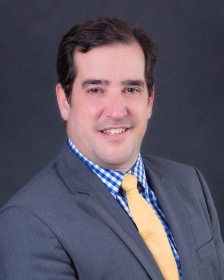
Harold Evensky CFP® , AIF® Chairman
A broker stands looking out of the window of his sumptuous office down at the marina thirty stories below with his client at his side. “See those yachts down there?” says the broker to his client. “The one on the left is mine, the one in the middle is my partner’s, and the one on the right is our office manager’s.”
“Where are your clients’ yachts?”
David Samuel: Hello, Harold. It’s David Samuel again. I know you have that AAII meeting coming up next week, but this can’t wait. My brother said he just got a call from his broker, who told him to bail out of the market at least for the next few months because the firm’s technicians said they see a major correction coming within weeks. I assume you’ve probably seen the same and agree, but I just wanted to double-check.
Harold Evensky: David, I just want to be sure I have this straight. You’re saying the broker is confident enough in his crystal ball to say that everyone should run to cash?
DS: You got it.
HE: Hum, I know he works for a big wire house; I wonder if that firm has moved all its money to cash? I don’t think so, because a move of that magnitude would have made the papers, and none of the managers we monitor have made significant liquidations recently. It somewhat makes you wonder what your brother’s broker knows that no one else does.
DS: Well, I understand that he’s been in the business for decades and he’s a senior VP at the firm, so he must know something.
HE: I’m sure he knows how to sell, because the impressive title comes with generating big commissions for the firm. There are many quality SVPs who earn their commissions from long-term quality advice.
Unfortunately, there are some who succeed by focusing on generating commissions independent of the client’s needs. That’s the basis for the old joke: “How do you make $1,000,000 in the market? Start with $2,000,000.” In deciding whether market-timing advice is something you want to follow, remember, when market timing, a broker earns a commission for the sale of each and every one of the positions their clients sell and another commission when they repurchase those positions. Here are a few things you might want to consider:
Can you name the top ten musicians of all time? The top ten baseball players? The top ten presidents? Of course, you can. We might argue about the list but most people can make up a list.
Now, tell me the top ten market timers of all time? Can’t even name one, can you? Your brother’s broker may be the first, but do you really want to bet on that?
What do market reality and statistics tell us? There are innumerable problems with market timing, including transaction and tax drag. But there are two major problems. You have to make two correct calls: 1) when to get out and 2) when to get back in. Factoring in transactions and taxes, research indicates you need to be correct about 70 percent of the time.
Markets don’t just drop precipitously, but they recover quickly, so waiting for confirmation of the end of a bear market usually means missing a significant part of the recovery. That makes for a tough hurdle.
For example: In a study covering the period 1987–2007, research found that the annualized return for someone invested for 5,296 days was 11.5 percent. Unfortunately, if you missed the ten best days (less than 2/10 of 1 percent), your return would have dropped to 8 percent,
Why would you be likely to miss those best days? Because those best days occurred within two weeks of a worst day 70 percent of the time. And they occurred within six months of a best day 100 percent of the time!
In an industry study in 2008, researchers found that although the annualized market return for the prior twenty years was 11.6 percent, the average stock fund investor earned a paltry 4.5 percent. It turned out that for most investors, market timing was mighty expensive. And, David, unless you’ve recently obtained a working crystal ball, it’s likely to also prove costly for you.
To make money in the market, you have to be in the market through thick and thin. In fact, if you remember our discussion on rebalancing, you’ll remember that bear markets are great buying opportunities for long-term investors. So, my advice is to stop listening to so-called experts spouting nonsense and go back to making money in your business.
This blog is a chapter from Harold Evensky’s “Hello Harold: A Veteran Financial Advisor Shares Stories to Help Make You Be a Better Investor”. Available for purchase on Amazon.

